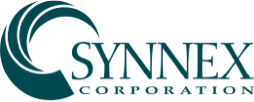For most partners, it’s easy to list off the features of ProLiant Gen10 servers—you can find product information in the snap of a finger. But truly understanding these industry-leading features and explaining why they matter to your SMB customers takes a bit more finesse.
We consulted with Michael Head, ProLiant Rack and Tower Category Manager at HPE, for insights on how resellers can have more effective conversations with their SMB customers about ProLiant Gen10 features, and how these features can positively impact how SMBs work both today and in the future.
Why HPE ProLiant for SMBs?
Head says he takes great pride in working with ProLiant because HPE spends so much time in research and development when building the products. Resellers can tell SMB customers that HPE engineers their servers with the end-user in mind—and that’s not just rhetoric.
“We go to our customers and ask, ‘What are your pain points? What would you like to see different? What do you need a server to do that it isn’t doing today?’” says Head. “Then, we take that feedback and engineer it into our systems.”
Another boon for SMBs? ProLiant Gen10 offers them features that typically are only available for enterprise-class products. These features are incorporated into the technology without changing the server price point—a great selling point for customers who might assume they’re missing out on the advanced tools enjoyed by enterprise companies. “What’s nice is our SMBs and our mid-market customers get that enterprise level of security and automation, even down to our microserver,” says Head.
Most importantly, the reason ProLiant is a good fit for SMBs is reliability—SMBs do not have time to waste on support issues. Says Head, “ProLiant servers are the most trusted servers on the planet because they just work.”
Advanced security features protect against cybercrime
Security is the cornerstone of ProLiant Gen10 technology—a huge selling point for resellers.“We’ve had independent studies come out that say we are two generations ahead of our competition when it comes to security,” says Head. “Not two years, but two full generations ahead.”
Just as HPE engineered feedback from SMB customers into its servers, it also gathered input from the FBI when it started developing ProLiant Gen10. “Five years ago, we asked them about threats on the horizon and learned there was a massive increase in cybercrime expected,” he says.
That information drove the advanced security features that HPE built into ProLiant Gen10 to guard against cyberattacks. “They help protect our customers, detect entry, and recover in the case of a breach,” says Head. SMBs don’t generally have large security departments, but HPE provides protection that safeguards their servers and keeps them up and running.
All ProLiant Gen10 servers have the HPE-exclusive Silicon Root of Trust, the cybersecurity solution that received a Cyber Catalyst designation. “You’ll get better cybersecurity insurance rates if you use ProLiant,” says Head. “For example, when you drive a safer vehicle, you get better insurance rates. It’s the exact same idea here with your cyberinsurance. And because cybercrime is increasing so much, cyberinsurance is the fastest-growing type of insurance policy in the market right now.”
The hybrid cloud and why it matters for SMBs
With the hybrid cloud, the public cloud and on-premises hardware work as a single, seamless infrastructure. “We tell our customers that the world will be hybrid,” says Head.
Why is it important to small businesses? Because they have to decide which they will use for what. Says Head, “SMBs have to decide, and SYNNEX and HPE can help with this: what is mission-critical, what needs high availability, and what can kind of be passed off to the public cloud knowing that it could go down for a while.”
The hybrid cloud can be surprisingly affordable, according to Head, in part thanks to consumption-based pricing where the customer only pays for the computing resources they use.
Another consideration is virtualization, where multiple virtual machines run on a single server to avoid server sprawl and underutilization. But virtual machines can’t be repurposed—that’s where composability comes into play. Composability is a software-defined solution that virtualizes the entire IT infrastructure into a pool of resources. “It’s all one fluid pool that you can pull from,” says Head. “As soon as you're done with the resource, you can slide it right back into the pool. So it gives you the ability to utilize more power within your servers.”
Both can mean cost savings for SMBs. “They don't have to buy really expensive stacks for everything,” says Head. “They can use a resource on an as-needed basis and then put it right back. It can be used for literally anything.”
Intelligent automation for easier server management
Agility is a significant advantage of most SMBs, according to Head. SMBs can implement change much faster than an enterprise-size company, so using intelligent automation helps them accomplish more. “SMBs succeed when they can use automation to manage things,” Head says, “and can spend less time keeping operations running and more time on innovating and their core competency.”
That’s where InfoSight comes in, HPE’s AI-powered predictive analytics platform that’s built into every HPE server family—from ProLiant to Apollo. InfoSight uses advanced machine learning to predict and prevent infrastructure problems before they happen.
“It’s a crystal ball that reads across all of your sites and says, ‘Hey, you’re going to have a failure here,’ or, ‘This is not the best practice,’ or, ‘This person has an unsecure password, you should probably correct that,’” says Head. “And it’s all in a single dashboard, which saves a ton of time and gives you a level of support that just hasn’t existed before without an expensive paid service.” For resellers interested in growing their managed services practice, InfoSight also opens new possibilities. They can monitor customers’ servers through InfoSight to ensure they’re in optimal health, and they can even see server age and warranty status, so they can build out a refresh plan for their customers.
Workload optimization keeps costs down for SMBs
Head likes to say that when it comes to workload optimization, one plus one equals three.
“If you took the sum of all of our parts and ran it through our workload optimization,” he explains, “and then took the sum of the same parts and put them into a competing server, ours would perform 5 to 15% better because we have this tuning process for the server.”
Saving 5 to 15% off the sticker price, he says, is only the tip of the iceberg. Head describes the powering, cooling, facilitating, and other maintenance costs as the parts you don’t see. “When you need 15% less compute,” he says, “you also spend 15% less on powering, cooling, and the rest. This is a substantial savings for SMB customers.”
Learn more about how SYNNEX and HPE drive value for partners and their customers and get 5 insider tips to finding the right ProLiant servers for SMB customers. Have questions? Connect with us at [email protected].


